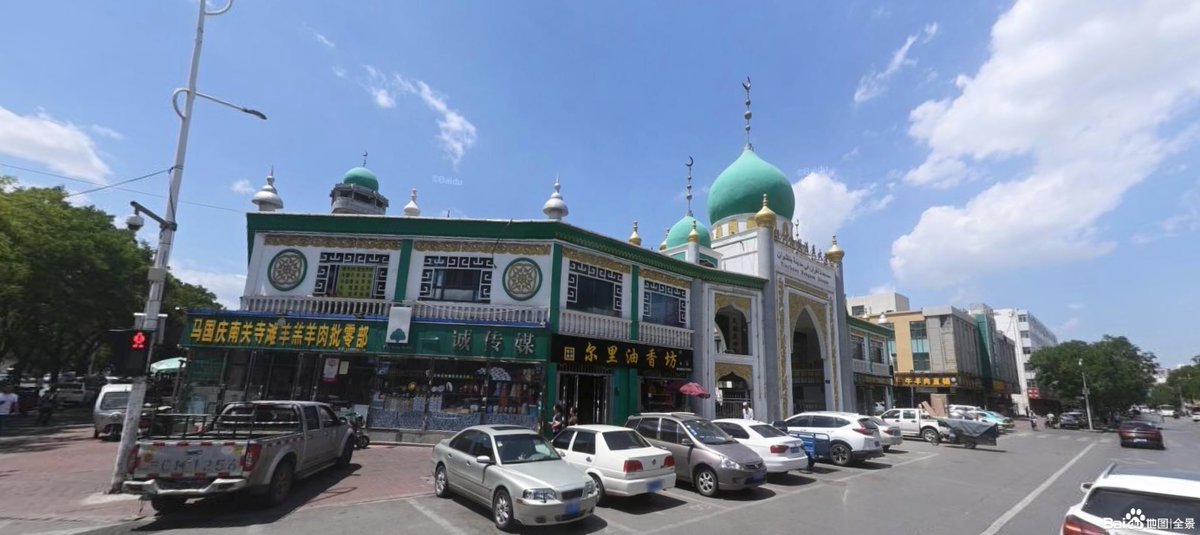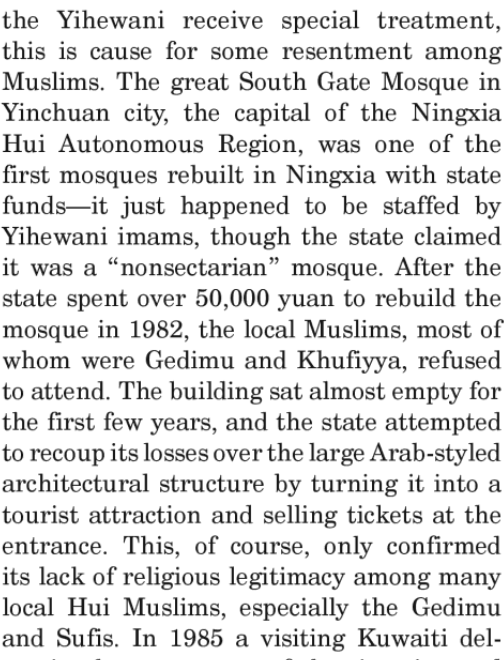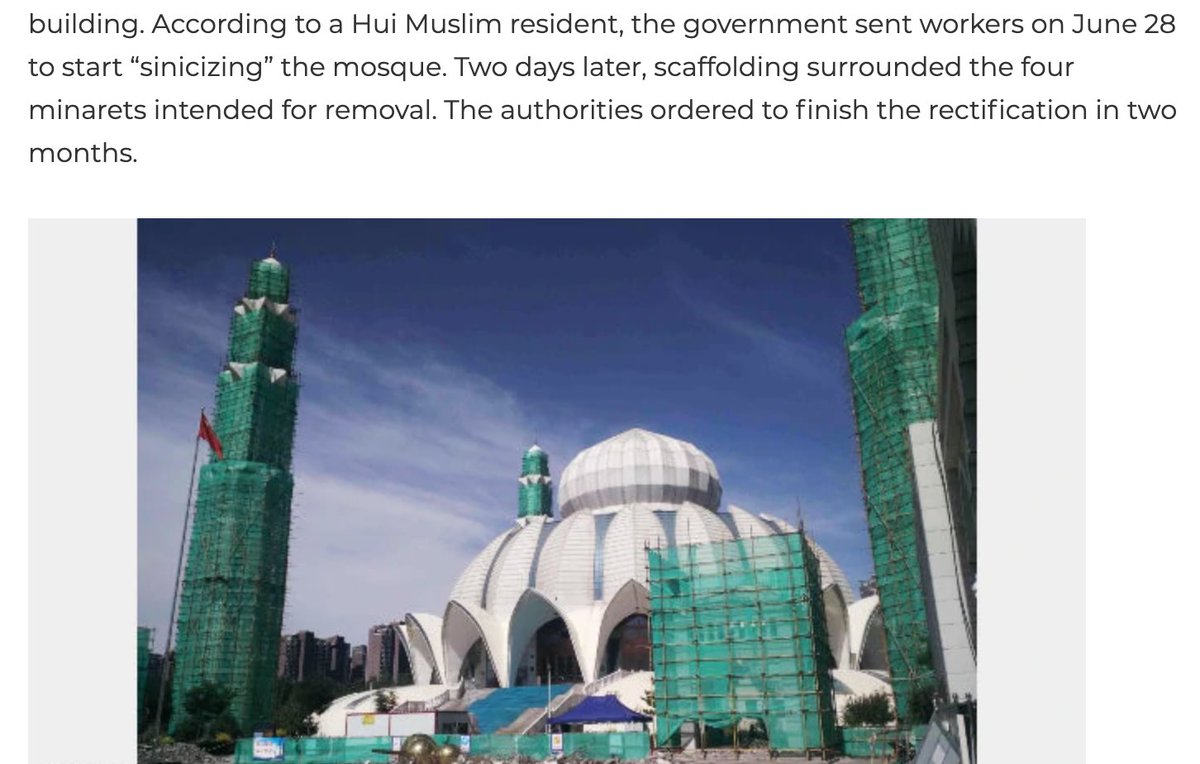
This is mostly an excuse to look around Yinchuan on Baidu's street view. I read about mosque architecture Sinicization, then spent an hour or so looking at Yinchuan mosques. I have no conclusions. Some of the pictures are interesting. This is the Xinhua Mosque 新华清真寺... 

From memory, it was built in the early '50s by a local entrepreneur, fell into disrepair, and was renovated into the more international style above sometime in the '90s. Two years ago, it was restored to what you see below. They switched handset sponsors, too. 

This is a view of the Nanguan Mosque 南关清真寺. It was rebuilt mostly from scratch in 1982, the original structure having been heavily damaged in the 1960s. I've never come across a clear explanation of why Yihewani mosques tend toward more international architecture... 

...or what's called "Arab-style mosque architecture" 阿拉伯式清真寺建筑. Maybe it suited local officials—a key source of funding for this mosque—interested in mosques as potential tourism draws. Maybe it suited or was imagined to suit the tastes of international funding sources. 



That passage above goes on to describe a Kuwaiti delegation visiting the Nanguan Mosque but electing to give their funding to the Central Mosque, dominated by the Gedimu, who, unlike the Yihewani, are usually described as preferring Chinese-style mosque architecture. 

Built in '37 the Central Mosque 清真中寺 escaped major damage during the Cultural Revolution because factories were put inside, but it was renovated in '79. It's experienced its own recent renovations: the picture above is from 2019 and the picture below from 2014. 

Back to Nanguan... It's used as an example of the wicked trend of Sinicization. Perhaps this is religious architecture showing Chinese characteristics 宗教建筑要体现中国特色. I feel worse about the 1979 Central Mosque gate facade being turned into typical tourist zone facade. 

It's disappointing that we can really only see the gates. It's not a lot to go on. This is the Xiguan Mosque 西关清真寺. I've never seen this much advertising on mosque gates. It's nice that Baidu offers us these historical shots, since you can see each year's sponsors change. 

I wonder what caused that change. Was it the mosque's own management committee, some directive from the city about beautification, sponsors discouraged? This really is the most amateur of investigations. But, again, maybe the pictures are interesting. 

I got interested in this after someone sent me a story about a mosque located in a part of the city called Yuehai 阅海. It's being Sinicized also! But the architecture looked quite modern, more like the Sino-Arab Axis (a bold architectural project/international tourist site)... 

And, yes, it was only built a couple years ago, part of a massive development on the outskirts of the central city. Baidu's street view has plenty of pictures with scaffolding up. With this sort of thing, I'd lean toward it being some local real estate conflict... 

But I have no idea. I can't find any reporting on this to share even a half-informed opinion. So, our only source is a picture of scaffolding on a site run by Catholic fascists known for defending murderous cults. Who knows! There's the other half of the complex, completed 2017. 

This is about twenty miles downriver from Yinchuan. It's called the Taizi Grand Mosque 台子清真大寺. It was rebuilt in 1980. I could spend all day looking at these. But that's it. I should also recommend 宁夏回族建筑艺术 by 刘伟, for providing some historical details. 

• • •
Missing some Tweet in this thread? You can try to
force a refresh































